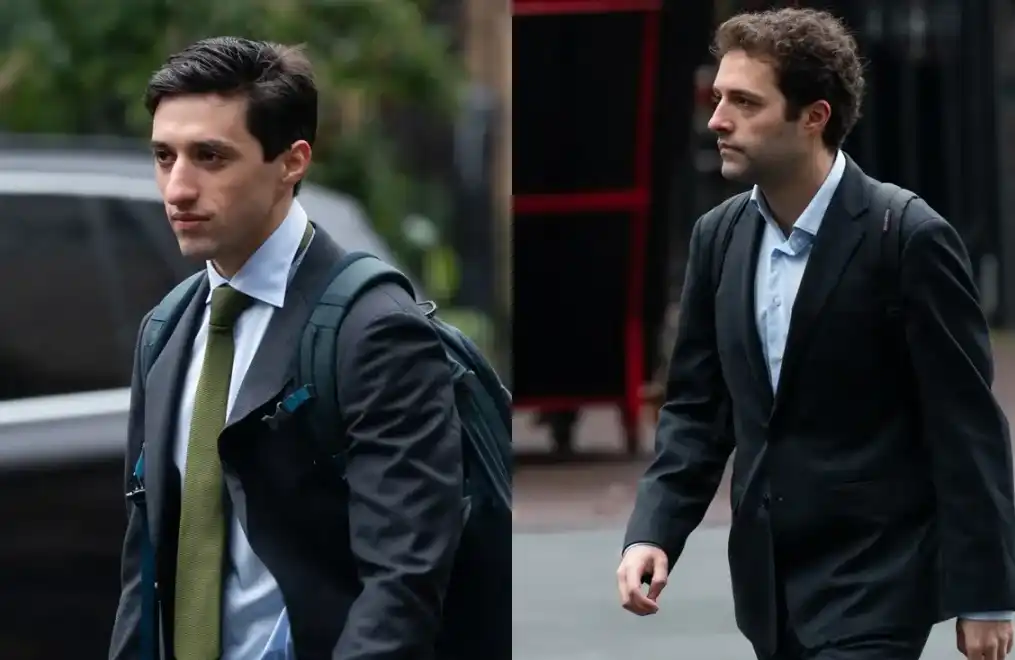The founder was finally liquidated, is Curve's flywheel completely bankrupt?
In the general decline of cryptocurrencies, CRV was unexpectedly the worst hit.
This morning, Arkham posted that Curve founder Michael Egorov currently borrowed $95.7 million in stablecoins (mainly crvUSD) on 5 accounts in 5 protocols with $140 million in CRV as collateral. Among them, Michael has $50 million in crvUSD borrowed on Llamalend, and Egorov's 3 accounts have accounted for more than 90% of the crvUSD borrowed on the protocol.
Arkham pointed out that if the price of CRV falls by about 10%, these positions may begin to be liquidated. Subsequently, CRV's decline continued to expand, once falling below $0.26, reaching a historical low, and Michael's CRV loan positions on multiple addresses gradually fell below the liquidation threshold.

In the past, Michael would cover his position to save his reception position, but this time, he seemed to have "given up".
According to Ember monitoring, some CRV of Michael Egorov's main address's lending position on Inverse has begun to be liquidated. According to Lookonchain monitoring, Michale Egorov currently holds 111.87 million CRV (US$33.87 million) in collateral and US$20.6 million in debt on 4 platforms.
Liquidation crisis 2 months ago
The crisis of CRV began to emerge as early as 2 months ago, when Michael's lending position had fallen below the liquidation threshold, but Michael was not liquidated at that time, and Michael did not take any remedial actions.
On April 14, as the market fell, CRV prices also fell to $0.42, and Curve founder Michael Egorov's lending position entered the red line again. According to Ember's monitoring, Michael pledged a total of 371 million CRV on 6 lending platforms through 5 addresses and lent out $92.54 million in stablecoins. Among the 12 debts, silo lending positions are the most dangerous.

Starting from November 2022, when the "on-chain big short" ponzishorter tried to short its token CRV, to the end of July 2023, Curve was attacked due to a Vyper compiler failure. Michael frequently took actions to save his position, stirring the "soup" of DeFi. People also compared this series of actions to the "DeFi defense war".
The first "defense war" may be Michael's inducement to short, which made the price of CRV rise instead of falling, and profited from the "air force battle". The second "defense war" relied on the power of OTC. Although its holdings decreased, it gained a group of powerful supporters including Wu Jihan, Du Jun, Sun Yuchen and other top players, as well as DWF and other institutions. It can be said that both defense battles of CRV are quite victorious.
Related reading: "Curve problem is the manifestation of DeFi's "income disease""
At noon on April 14, the price of CRV fell to $0.42. According to debank data, of Michael's 12 positions, 5 positions have a health value of 1.12 or even lower. Ember monitored Michael's debt position red line and tweeted to speculate on liquidation. He pointed out that if the price of CRV continues to fall by 10% without replenishment or repayment, the liquidation procedure will be initiated.
All debt positions have not been liquidated
However, just as people were thinking about how CRV should deal with the third "DeFi defense war", something interesting happened.
People noticed that at 4 a.m. that day, the price of CRV fell to $0.3592, having already fallen below 10% of $0.42. But Michael's debt position was not liquidated as Yu Jin said, and even Michael himself did not seem to take any remedial measures.

Michael's debt position is distributed in 6 different lending protocols, among which the most controversial lending protocol is silo.
After curve was attacked, most lending protocols were unwilling to bear too much risk associated with CRV and tightened their policies. More than half of the loans raised by Michael came from silo. In the process of Michael's subsequent repayment of AAVE debt positions, silo provided almost all the required loans. It can be said that silo has become the biggest reinforcement for Michael to repay his debts, and many community members have ridiculed it as Michael's "personal bank". .
At that time, of Michael's total debt position, the silo protocol deposited about 113 million CRVs, and lent out a total of about 27.9 million US dollars worth of stablecoins, accounting for 30% of Michael's total debt position, but Curve LlamaLend, UwU Lend and FraxLend protocols also provided most of the loans to Michael. Although the proportion was not as high as silo, it was still higher than 15%, of which Curve LlamaLend accounted for 20.7%, UwU Lend accounted for 17.9%, and FraxLend accounted for 17.3%.
On the other hand, silo had forked a new protocol Silo Llama, which is a segregated lending protocol designed specifically for crvUSD. Although this protocol is full of doubts, DeFi should be designed to be independent of user emotions. Compared with borrowing, the lock-up rate of CRV has a greater impact on the selling of CRV. Setting up a separate pool for CRV is one of the working methods of DeFi lending vaults, and silo team members also explicitly denied the accusation of "creating Silo Llama for one person".
Apart from the relationship between silo and curve, the essence of the dispute is that silo did not liquidate CRV. Insiders said that since the CRV positions on silo use Chainlink oracles, price updates will lag behind debank, so it is questionable whether the oracle tracks the liquidation price.
According to Chainlink data, the CRV prices included at that time all showed that it fell below $0.4 at 5:30 a.m. on April 14, ranging from $0.36 to $0.38. I then checked data from dexscreener, coingecko, tradingview, coinmarket, etc., and found that CRV fell to around $0.36 on the 30-minute chart.

Since the lowest price of CRV occurred in the early morning, I am currently unable to verify whether the health factor at that time was zero. But no matter what happened to CRV and the various lending agreements that night, the only thing that is certain is that not only silo, but all of Michael's debt positions are still there.
During this crisis, some people have focused on silo's manual liquidation mechanism. Since silo's liquidation is completely open, liquidators can choose manual or machine. When asked whether they would not be liquidated by the machine after choosing manual liquidation, the insider said that manual liquidation is only a personal liquidation entrance provided by the platform. When facing a debt to be liquidated, individuals still need to compete with the machine for orders, and often cannot compete with the machine.
Therefore, the key to whether liquidation is triggered or not lies in whether the price of the collateral has really fallen to the liquidation value.
The "price game" of the liquidation mechanism
According to the silo document, the lending agreement has a liquidation application, which the core team uses to monitor risk positions and liquidate insolvent positions if the liquidation robot (including Silo) does not liquidate first for any reason.
On April 19, CRV fell again to $0.4. According to Michael's address provided by Ember, the health factors of the debt positions of the addresses starting with 0x9, 0x4, and 0x7 in silo are all below 0.1, which is in a dangerous state.

According to the silo finance collateral factor table, CRV has a loan-to-value ratio (LTV) of 65% and a liquidation threshold (LT) of 85% in the silo protocol. This means that Michael's silo liquidation price is in the price range of $0.41 to $0.44, so the health factor is theoretically 0.
Calculation formula:
Liquidation price = total amount of loans/(number of collateral*LTV*LT)
Health factor = 1-total amount of loans/(total amount of collateral*LTV)
In response, BlockBeats verified with the project team that its price tracking is not simply checking the oracle feed price, but using a weighted average algorithm. This means that the liquidation price of a token will be affected by the price of the lender's other loan assets, so the price drop of CRV alone is not enough to liquidate the position. However, when asked about the liquidity supply issue, the project team did not respond.
As for Llamalend, the platform where Michael has the largest position, its "automatic cashing out" mechanism can defend against soft liquidation. Simply put, the liquidation process is that when the price falls, the collateral is automatically converted into stablecoins, and when the price rises, the collateral tokens are sold back, and only a small amount of crvUSD needs to be repaid to increase the health factor.
In addition, insiders told BlockBeats that in fact, in the case of large market fluctuations, liquidators need to consider slippage issues, which involves slippage of crvUSD and CRV at the same time. In the past few large floating fluctuations, it is normal for the lending agreement machine to not move.
Was it "cut" by Michael this time?
The impact of tens of millions of dollars of debt position liquidation on the liquidity of the entire crypto market cannot be underestimated. The crisis in April was still avoided due to the protection mechanism of the lending platform, but this time CRV fell below $0.26, and the crisis finally came.
Liquidators Profit
Whether to buy at the bottom of the new low price is also a topic of concern to investors, but at least in CRV, liquidators have begun to make profits.
According to ai_9684xtpa monitoring, the address 0xF07...0f19E is one of the main liquidators of Michael's position. In the past hour, the address liquidated 29.62 million CRV at an average price of $0.2549, spending a total of 7.55 million FRAX. At present, all of these tokens have been recharged to Binance, with an average recharge price of $0.2792.
As a liquidator, a more economical way may be to open a CRV short order (or borrow coins to sell) on Binance before liquidation, so that the tokens obtained from liquidation are only used to close the short position (or repay the loan), without having to bear the profit and loss caused by the price fluctuations during the period.
But even if 0xF07...0f19E does not do this, it can still make a profit of $720,000 by selling at the average recharge price.
Investors suffer losses
But on the other hand, investors are facing a disaster.
On the one hand, the price drop triggered the liquidation of other lending platforms. Fraxlend's lenders suffered millions of dollars in liquidation. According to Lookonchain monitoring, some users were liquidated on Fraxlend for 10.58 million CRV (US$3.3 million).

In comparison, Fraxlend's liquidation mechanism is easier to trigger, and its risk isolation and dynamic interest rate mechanism do not require any additional measures to allow Michael to repay the money on his own initiative. In the previous liquidation crises, Michael borrowed a large amount of assets from Aave and sold coins through OTC to repay Fraxlend's debts.
On the other hand, early CRV investors faced huge losses.
Since the CRV crisis last year, there has been no shortage of comments in the community that "Curve's good cards were broken by Michael." The most noteworthy thing about this CRV crisis is the major investors who helped Michael before.
After Curve was stolen at the end of July last year, OGs, institutions and VCs from all sides helped. Jihan Wu, co-founder of Bitmain and Matrixport, posted on social media: "CRV is one of the most important infrastructures in the upcoming RWA wave. I have bought it at the bottom, which does not constitute financial advice."
Huang Licheng confirmed on social media that he purchased 3.75 million CRV from the founder of Curve through OTC and pledged it in the Curve protocol. The next day, Sun Yuchen's relevant address also transferred 2 million USDT to Egorov's address and received 5 million CRV.
Followed by projects such as Yearn Finance and Stake DAO, as well as a number of institutions and VCs such as DWF, they all participated in the firefighting of CRV.
Now that CRV has fallen to a record low, Michael himself has not yet made any statement to save it. This storm is just as the community said, "The party that cut people was finally cut by Michael."
Welcome to join the official BlockBeats community:
Telegram Subscription Group: https://t.me/theblockbeats
Telegram Discussion Group: https://t.me/BlockBeats_App
Official Twitter Account: https://twitter.com/BlockBeatsAsia


 Forum
Forum Finance
Finance
 Specials
Specials
 On-chain Eco
On-chain Eco
 Entry
Entry
 Podcasts
Podcasts
 Activities
Activities
 OPRR
OPRR









